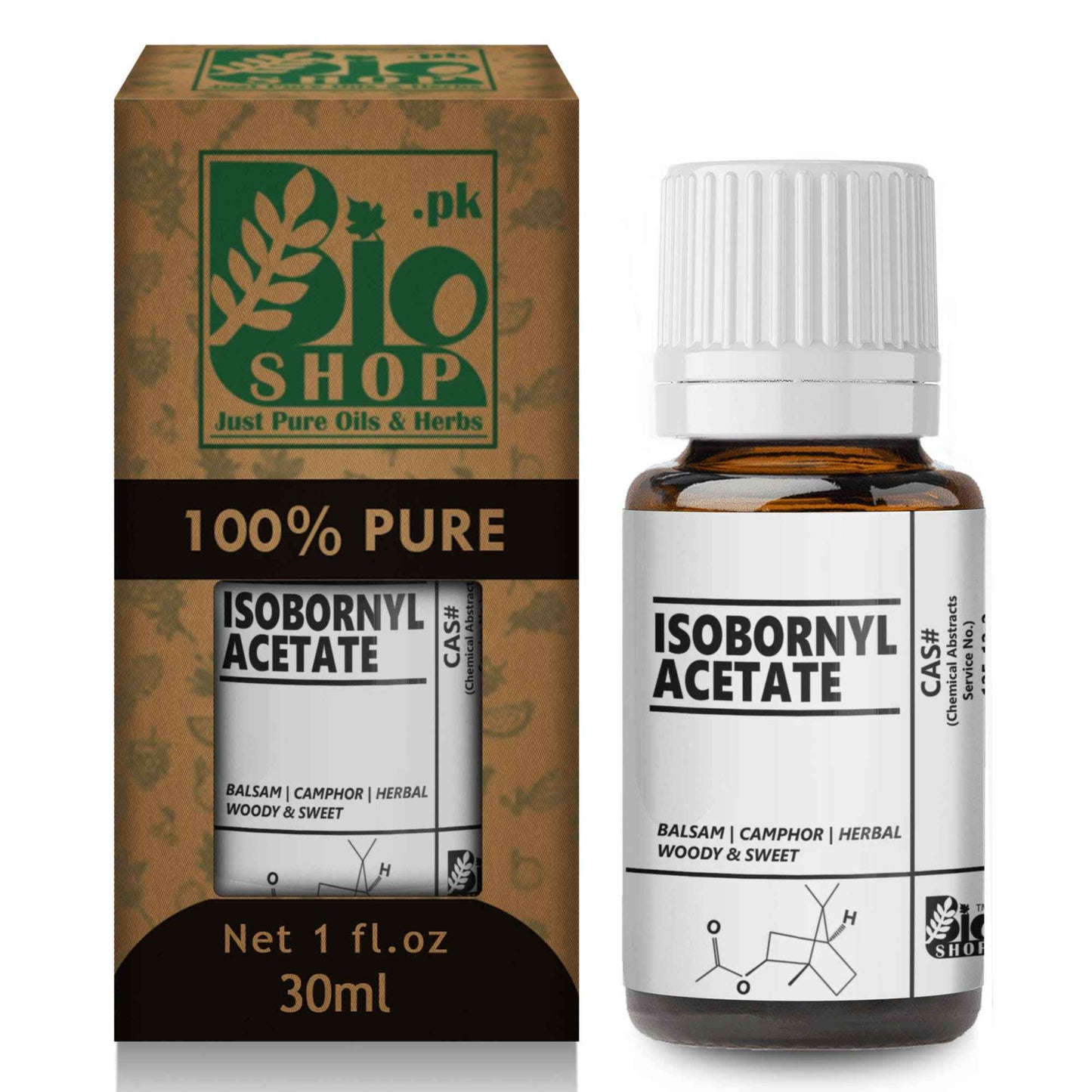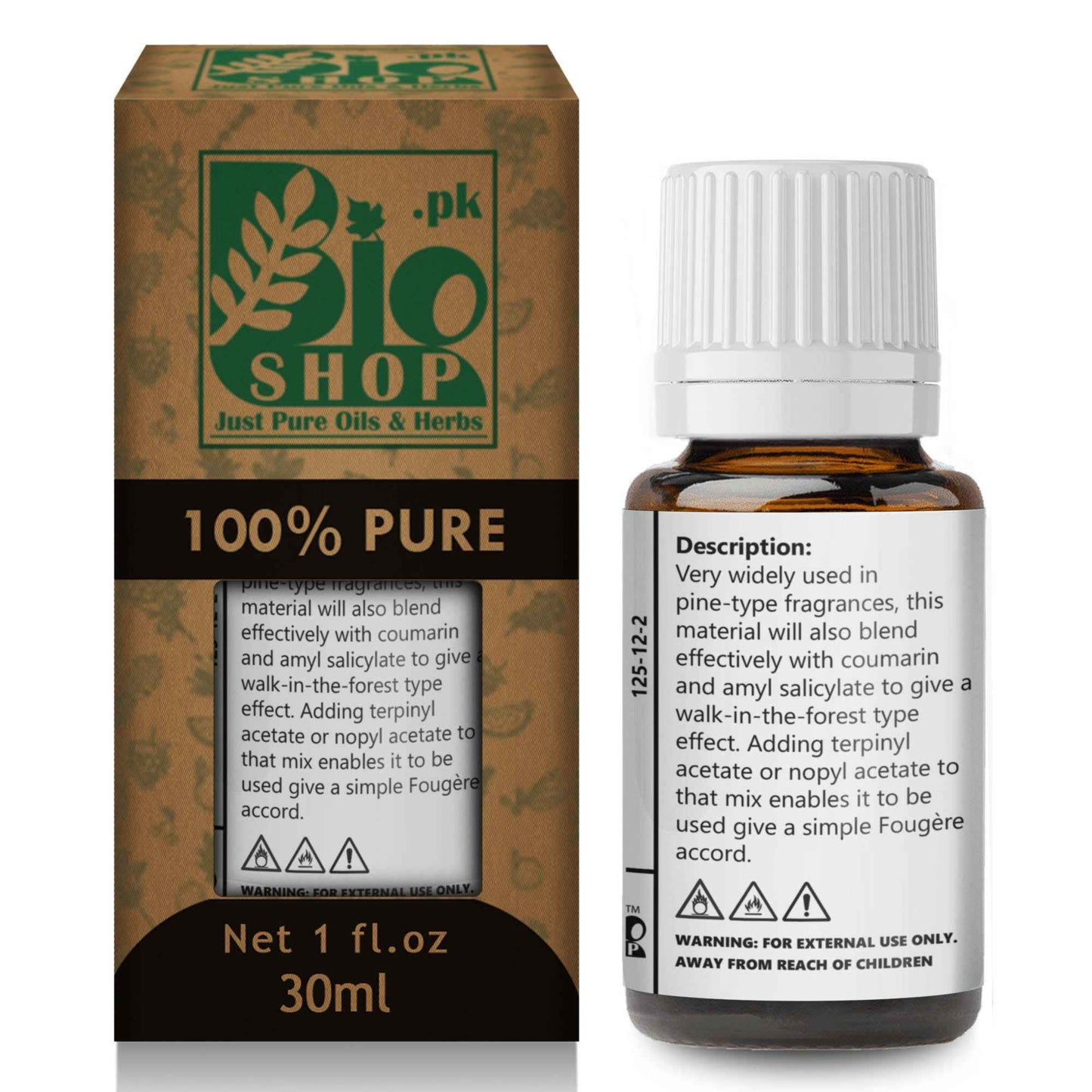Bio Shop
Isobornyl Acetate
Isobornyl Acetate
Olfactory Notes: Pine · Woody · Fresh · Camphoraceous · Herbal · Clean · Crisp
Pickup available at Main Office
Usually ready in 24 hours
Explore
Information About Isobornyl Acetate
Key Features
- Bright piney-woody ester with cooling green effect
- Adds fresh forest-like depth and lift to top notes
- Ideal for fougères, colognes, green florals, incense woods, and spa scents
- Blends well with citrus, lavender, resinous balsams, and coniferous oils
- Suitable for roll-ons, body sprays, mists, and oil perfumes
About Isobornyl Acetate
Isobornyl Acetate is a crisp, camphoraceous aroma chemical with a cool, woody-pine scent, often described as fresh, clean, and forest-like. Naturally present in pine and rosemary oils, it is used in perfumery to bring herbal freshness, cool green brightness, and woody lift to top and heart notes.
Highly valued for its stability and longevity, it is especially effective in masculine fougères, herbal colognes, pine accords, and spa-style body products.
Technical Data
INCI Name: Isobornyl Acetate
CAS Number: 125-12-2
Molecular Formula: C12H20O2
Appearance: Clear, colorless to pale yellow liquid
Odor Description: Piney, woody, herbal, camphoraceous, crisp
Purity: 98%+
Boiling Point: ~238°C
Flash Point: ~105°C
Density: ~0.98 g/cm³
Solubility: Soluble in alcohol, DPG, and fixed oils
Recommended Usage Level: 0.1%–5% in final perfume concentrate
Category: Piney Modifier – Top/Heart Note – Perfumery Use
Application Tips
Use 0.5–3% to bring herbal pine clarity and freshness to fougères, green mists, or forest-inspired blends.
Pro Tip
💡 To give your blend a clean forest-fresh character 🌲🧊, use 0.5–3% Isobornyl Acetate in roll-ons, mists, or oil perfumes.
🌿 Combine with rosemary, eucalyptus, or lavender for herbal colognes.
🍋 Add to citrus notes like bergamot or petitgrain for fresh masculine energy.
🪔 Use in incense blends or woody orientals to lift heavy resinous bases.
🔄 Let your formula rest 2–4 days—this ester mellows out for smoother transitions.
⚠️ Best in top and heart notes—avoid overuse to maintain balance in florals.
FAQ
Q1: What does Isobornyl Acetate smell like?
It smells like pine needles and fresh herbs, with woody, camphoraceous, and slightly citrusy brightness—cool and clean.
Q2: Is it natural or synthetic?
It is a semi-synthetic compound, derived from camphene, and occurs naturally in pine and rosemary oils.
Q3: Can it be used in oil-based perfumes or attars?
Yes! It’s fully soluble in DPG, alcohol, and oils, and ideal for attars, roll-ons, incense oils, and spa formulations.
Q4: What types of perfumes benefit from it?
Perfect for fougères, pine/herbal colognes, forest-inspired blends, masculine bases, and spa mists.
Q5: What does it blend well with?
Pairs beautifully with lavender, bergamot, rosemary, patchouli, cedarwood, frankincense, and musk.
Documentation
Upon request, we will provide.
Where Can You Safely Use Isobornyl Acetate?
Discover how Isobornyl Acetate performs across different applications—rated for safety, stability, and effectiveness.






